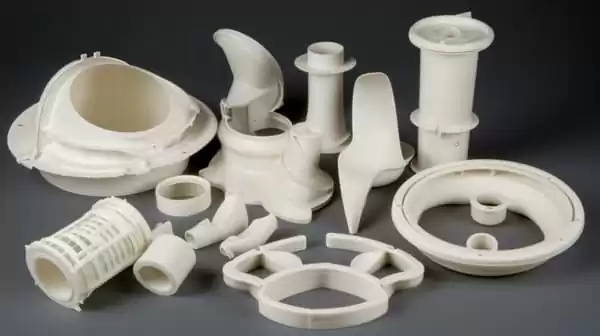Introduction:
Vacuum forming is a widely used manufacturing process in which plastic parts are created by heating a plastic sheet and forming it over a mold using vacuum pressure. This vertical press cutting process is employed in various industries to produce a wide range of plastic components, from packaging materials to intricate shapes.
While the vacuum forming process itself is crucial, the selection of the right finish for roller cutting vacuum formed items and parts is equally significant. The finish applied to a vacuum formed items not only enhances its appearance but also provides functional benefits and improves its overall quality. Choosing the appropriate finish is essential to ensure that the final product meets the intended use, aesthetic requirements, and functional considerations.

In this article, we will delve into the world of vacuum forming, exploring its significance in the manufacturing of plastic parts and emphasizing the importance of selecting the right finish. By understanding the impact of finishes on vacuum formed parts, you can make informed decisions that result in high-quality products that meet your specific needs.
II. Factors to Consider When Choosing a Finishing process
A. Understanding the intended use of the part:
Consider the purpose and function of the vacuum formed part.
Determine if it will be used for display, packaging, functional components, or other specific applications.
The intended use will influence the choice of finish, as different applications may require specific characteristics such as durability, visual appeal, or protection.
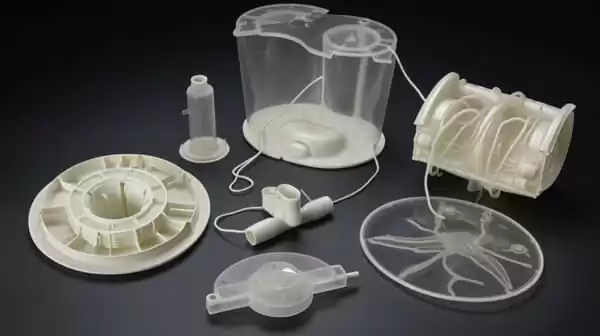
B. Evaluating the surface texture requirements:
Determine the desired surface texture of the vacuum formed part.
Consider whether a smooth, glossy finish or a textured finish is more appropriate.
Smooth finishes are ideal for a sleek appearance, while textured finishes can provide enhanced grip, reduced scratches, or added aesthetics.
C. Assessing material compatibility with finishes:
Take into account the material used for vacuum forming.
Different materials have varying compatibility with finishes such as paints, coatings, or laminates.
Ensure that the chosen finish is suitable for the specific material being used and adheres well to its surface.
D. Considering aesthetic requirements and desired appearance:
Evaluate the desired visual qualities of the vacuum formed part.
Determine if color matching, branding, labeling, or other aesthetic considerations are important.
Finishes such as painting, color-matching, silk-screening, or decals can be applied to achieve the desired appearance.
E. Accounting for functional considerations and specific features needed:
Consider any functional requirements the part needs to fulfill.
Assess if the finish needs to provide protection against UV radiation, chemicals, or other environmental factors.
Evaluate if specific features like snap fits, holes for cables, or draft angles are necessary and if the chosen finish can accommodate them.
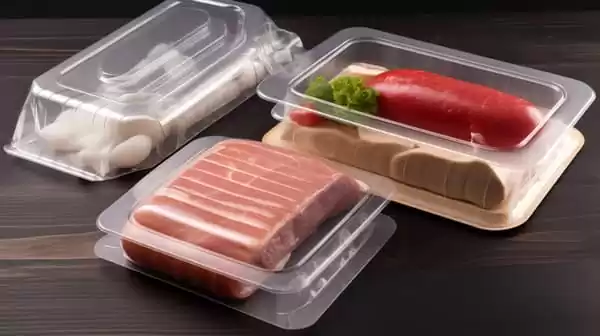
F. Evaluating cost and production efficiency implications:
Take into consideration the budgetary constraints and manufacturing limitations.
Some finishes may be more expensive or require additional processing steps, impacting the overall cost of the part.
Consider the efficiency and feasibility of the finishing process during large-scale production.
By carefully considering these factors, you can make informed decisions when choosing the right finish for a vacuum formed part. This ensures that the finish aligns with the intended use, enhances the aesthetics, meets functional requirements, and is cost-effective in the manufacturing process.
III. Overview of the Vacuum Forming Process
A. Explanation of the mold preparation step:
The vacuum forming process begins with the preparation of a mold, also known as a tool or a buck.
The mold is created to match the desired shape of the final vacuum formed part.
The mold can be made from various materials, such as wood, epoxy, or aluminum.
It needs to be properly prepared and polished to ensure a smooth surface finish on the vacuum formed part.
B. Heating and forming the plastic sheet:
A thermoplastic sheet, typically made of materials like ABS, PVC, or HDPE, is heated until it becomes pliable and soft.
The softened sheet is then draped over the prepared mold, ensuring it covers the entire surface evenly.
C. Vacuum and pressure forming:
Vacuum pressure is applied to draw the heated sheet tightly against the mold's surface.
The vacuum removes the air trapped between the sheet and the mold, allowing the sheet to conform to the desired shape.
In some cases, compressed air or other methods may be used to assist with the forming process, known as pressure forming.
D. Cooling and trimming excess material:
Once the part has taken shape, it needs to cool and solidify to maintain its formed shape.
Cooling can be achieved through the use of cool air or water applied to the mold.
Once cooled, the excess material, known as flash, is trimmed away from the sharp edges of the formed part.
Tools such as roller cutter tools or press cutting tools are used to precisely remove the excess material.
E. Additional finishing and assembly processes:
After trimming, the vacuum formed part may undergo additional finishing processes to achieve the desired appearance and functionality.
Finishing processes can include sanding, painting, applying coatings, or adding other features as required.
Assembly of multiple many vacuum formed parts or integration with other components may be necessary for the final product.
By understanding these key steps in the vacuum forming process, you can appreciate the technical aspects involved in transforming a heated plastic sheet into a finished vacuum formed part. Each step plays a crucial role in ensuring the part's quality, dimensional accuracy, and functionality.
IV.Choosing the Best Finish and Material
A. Discussing suitable finishes for different applications:
Smooth finishes: Ideal for applications requiring a sleek and glossy appearance, such as consumer plastic products, electronic enclosures, or display items.
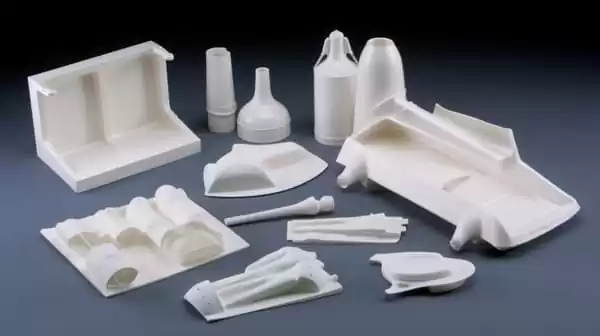
Textured finishes: Provide enhanced grip, reduce scratches, or add aesthetic appeal. Suitable for applications like tool handles, automotive interior components, or outdoor equipment.
Specific coatings: Specialized finishes like UV-resistant coatings for parts exposed to sunlight, chemical-resistant coatings for harsh environments, or antimicrobial coatings for medical equipment.
B. Exploring the best materials commonly used in vacuum forming:
ABS (Acrylonitrile Butadiene Styrene): Offers good impact resistance, rigidity, and ease of forming. Widely used in automotive parts, electronics, and consumer products.

PVC (Polyvinyl Chloride): Versatile and cost-effective material suitable for packaging, signage, and various consumer goods.
HDPE (High-Density Polyethylene): Known for its chemical resistance and durability, often used in industrial applications like containers and agricultural equipment.
PP (Polypropylene): Provides good chemical resistance, impact strength, and low moisture absorption. Commonly used in packaging, automotive components, and household appliances.
C. Considering the impact of finish and material selection on functionality and appearance:
Functionality: The chosen finish and material should align with functional requirements. For example, parts exposed to UV radiation might require UV-resistant finishes, or chemical-resistant finishes may be necessary for parts in corrosive environments.
Appearance: The finish and material selection significantly impact the visual appeal of the removing vacuum formed parts. Consider color matching, branding, labeling, or other aesthetic requirements to achieve the desired appearance.

Durability: Select finishes and materials that provide the necessary durability and longevity for the intended use of the part.
Compatibility: Ensure that the chosen finish is compatible with the selected material, as different finishes may adhere differently to various plastic materials.
By carefully considering the suitability of different finishes for specific applications, exploring commonly used materials in vacuum forming, and assessing the impact of finish and material selection on functionality and appearance, you can make informed decisions that result in high-quality vacuum formed parts that meet your requirements.
V. Tips for Successful Finish Selection
A. Conducting prototyping and testing to validate finish choices:
Prototyping with different finishes allows for evaluation of their appearance, functionality, and durability.
Testing the performance of finishes under various conditions helps identify any potential issues or shortcomings.
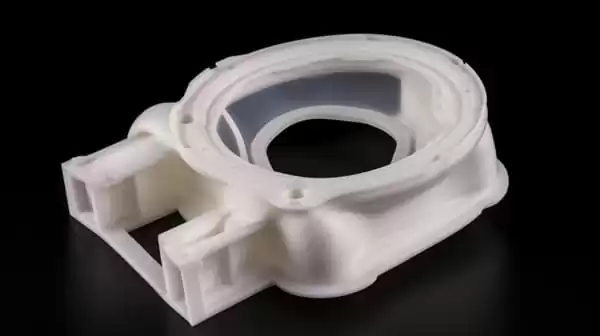
Prototyping and testing enable adjustments and refinements before moving forward with large-scale production.
B. Seeking expert advice when needed:
Consulting experts in vacuum forming and finishing processes can provide valuable insights and recommendations.
Experts can help assess the feasibility, compatibility, and potential challenges associated with specific finishes.
Their expertise can guide you in making informed decisions and avoiding costly mistakes.
C. Considering factors such as adhesion, durability, and compatibility:
Adhesion: Ensure that the chosen finish has good adhesion properties to adhere well to the vacuum formed part's surface.
Durability: Consider the durability requirements of the part based on its intended use and environmental conditions.
Compatibility: Assess compatibility with other components or finishes that may be applied to the vacuum formed part, ensuring they work harmoniously together.
By following these tips for successful finish selection, you can enhance the likelihood of achieving a high-quality and well-suited finish for your vacuum formed parts. Prototyping and testing validate the chosen finishes, seeking expert advice provides valuable insights, and considering factors like adhesion, durability, and compatibility ensures the finish meets your specific requirements.
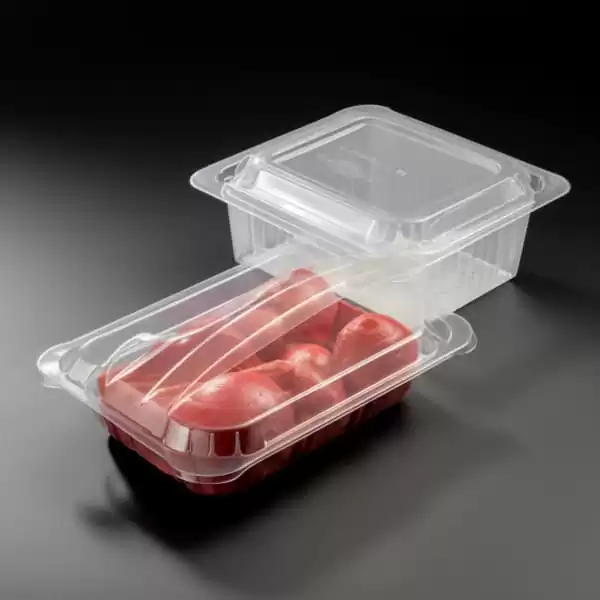
Conclusion
Choosing the right finish for vacuum formed parts is of utmost importance as it significantly impacts the overall quality, functionality, and aesthetics of the final product. By selecting the appropriate finish, you can enhance the appearance, protect the part, and ensure it meets the desired specifications.
Throughout this article, we have explored the key factors to consider when choosing a finish for vacuum formed parts. Understanding the intended use of the part, evaluating surface texture requirements, assessing material compatibility, considering aesthetic preferences, accounting for functional considerations, and evaluating cost and production efficiency implications are all crucial steps in the finish selection process.
It is vital to thoroughly evaluate and test different finishes to validate their suitability for the intended application. Prototyping allows for fine-tuning and adjustments, while seeking expert advice ensures informed decision-making. Considering factors such as adhesion, durability, and compatibility with other components or finishes further contributes to successful finish selection.
In conclusion, choosing the right finish for vacuum formed parts is a multi-faceted process that requires careful consideration of various factors. By investing time and effort into finish selection, you can achieve high-quality results that meet your specific requirements. Remember to conduct thorough evaluation and testing to ensure the chosen finish enhances the appearance, protects the part, and meets the desired functionality. With the right finish, your vacuum formed parts can excel in both form and function, making a positive impact in their respective applications.


